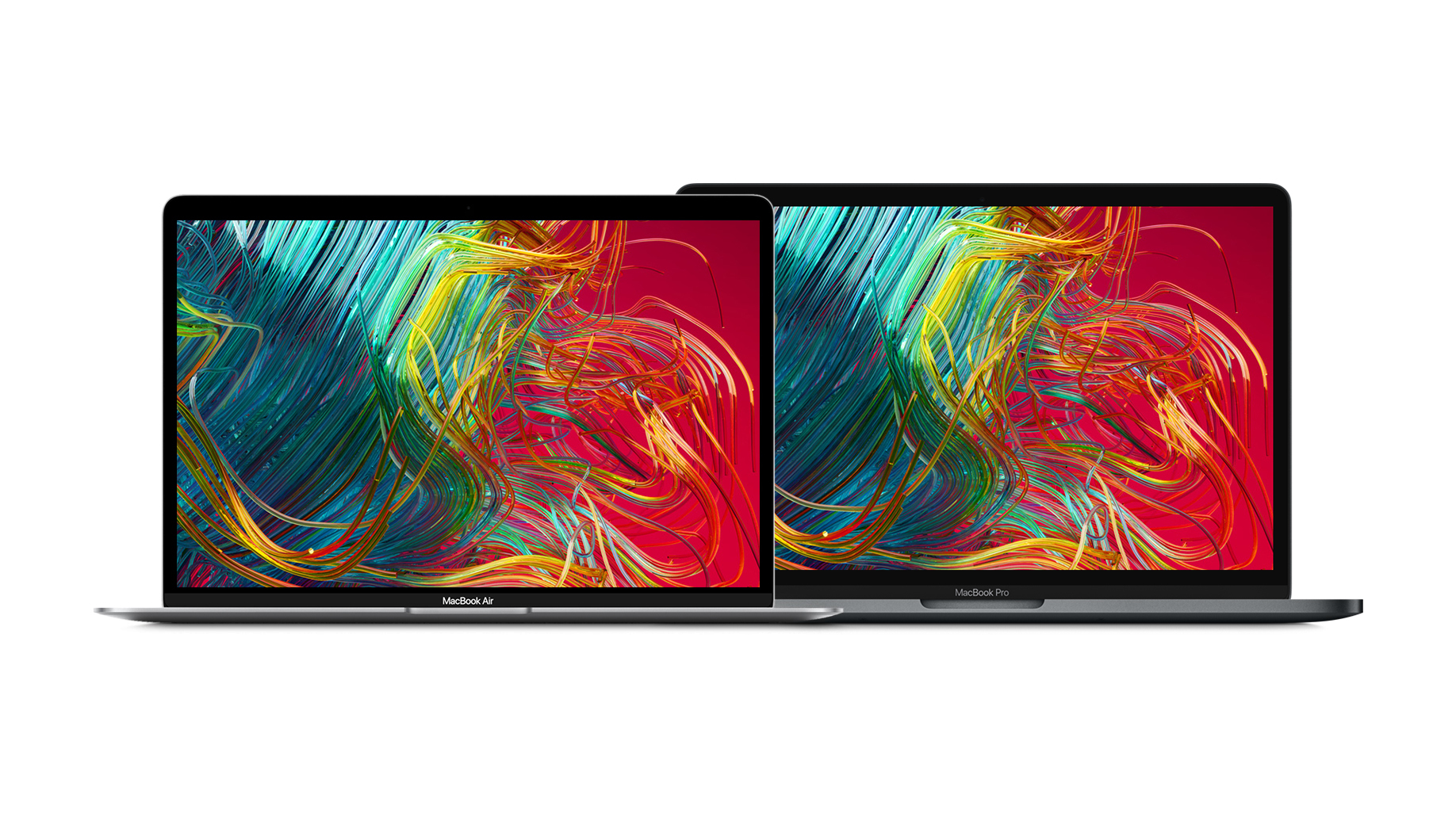![]()
Apple recently updated the
13-inch MacBook Pro, and the $1,299 base model remains a popular alternative to the $999
MacBook Air. To help with your buying decision, read our comparison of the notebooks below.
The differences between the base 13-inch MacBook Pro and the MacBook Air are quite nuanced, with each notebook possessing some unique features.
What's the Same
- 13-inch Retina display with 227 pixels per inch and True Tone support
- Magic Keyboard with reliable scissor switch design
- Force Touch trackpad
- 2 × Thunderbolt 3 ports
- 3.5mm headphone jack
- 256GB of SSD storage standard, configurable up to 2TB
- Touch ID
- T2 security chip
- 720p webcam
- 802.11ac Wi-Fi, also known as Wi-Fi 5
- Bluetooth 5.0
- Three-microphone array with directional beamforming
- Dolby Atmos surround sound
Advantages of Base 13-Inch MacBook Pro
- The display supports the P3 wide color gamut for more vibrant and lifelike colors
- The display is brighter at up to 500 nits vs. 400 nits on MacBook Air
- Touch Bar
- Slightly better sounding speakers
Advantages of MacBook Air
- Up to 11 hours of battery life vs. 10 hours on base 13-inch MacBook Pro
- Weighs slightly less at 2.8 pounds vs. 3.1 pounds for base 13-inch MacBook Pro
- Faster RAM: 3733MHz LPDDR4X vs. 2133MHz LPDDR3 for base 13-inch MacBook Pro
- 6K display support vs. 5K on base 13-inch MacBook Pro
Unlike the MacBook Pro, the MacBook Air also has a gold color option.
Performance
Generally speaking, the MacBook Air remains best suited for lightweight day-to-day tasks like web browsing and creating spreadsheets, while the MacBook Pro is better equipped to handle more intensive tasks like rendering large video files. This is not only because the MacBook Pro has faster processors than the Air, but also because it has a more advanced thermal design for dissipating heat inside the computer.
While the MacBook Air has been updated with Intel's latest 10th-generation processors, the base 13-inch MacBook Pro continues to use older 8th-generation processors. However, the Air uses lower-wattage Y-series chips with lower clock speeds, so the Pro still has faster overall performance, as confirmed by benchmarks.
Geekbench 5 scores for the latest 13-inch MacBook Pro and MacBook Air configurations:
- MacBook Air / 1.1GHz dual-core Core i3: 1,002 single-core and 1,998 multi-core
- MacBook Air / 1.1GHz quad-core Core i5: 1,055 single-core and 2,645 multi-core
- MacBook Air / 1.2GHz quad-core Core i7: 1,102 single-core and 2,843 multi-core
- MacBook Pro / 1.4GHz quad-core Core i5: 927 single-core and 3,822 multi-core
- MacBook Pro / 1.7GHz quad-core Core i7: 1,036 single-core and 3,909 multi-core
Takeaways:
- The base model 13-inch MacBook Pro for $1,299 has up to 91 percent faster multi-core performance than the base model MacBook Air for $999
- If considering the MacBook Air, upgrading to the quad-core Core i5 option is well worth the extra $100, as it is up to 32 percent faster than the base model and more closely rivals the base 13-inch MacBook Pro
Geekbench 5 scores are calibrated against a baseline score of 1,000, which is the score of an Intel Core i3-8100. Higher scores are better, with double the score indicating double the performance.
Compare with other Mac benchmarks here.
Bottom Line
If you value portability and up to an extra hour of battery life, and are willing to sacrifice some performance, the MacBook Air is a relatively good value. Just remember to consider spending an extra $100 on the quad-core Core i5 processor option, as the $999 base model is equipped with a particularly sluggish dual-core processor.
For more intensive tasks, the 13-inch MacBook Pro's faster processors and more advanced thermal design will allow you to push the limits more without the fans running obnoxiously. You'll also get the Touch Bar, a brighter and more vibrant display, and slightly better sounding speakers with high dynamic range.
Article Link:
Base 13-Inch MacBook Pro vs. MacBook Air




